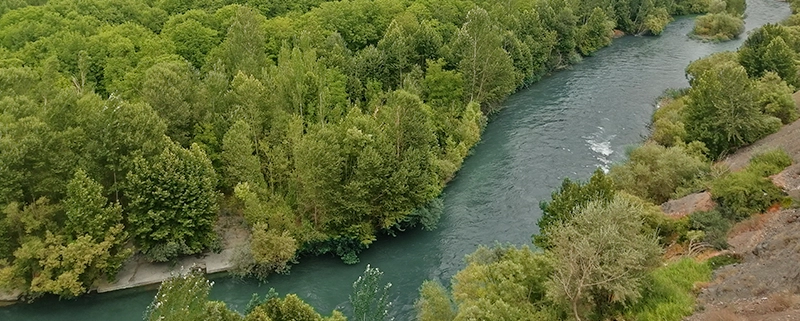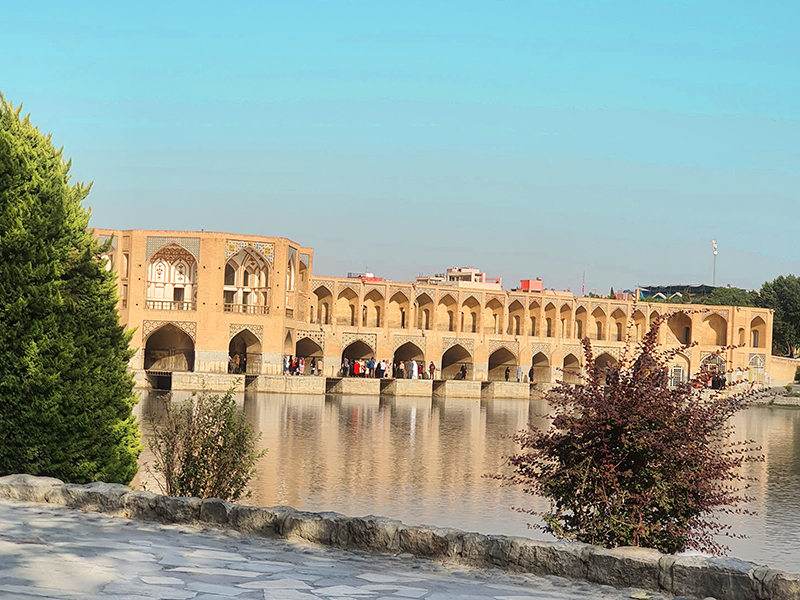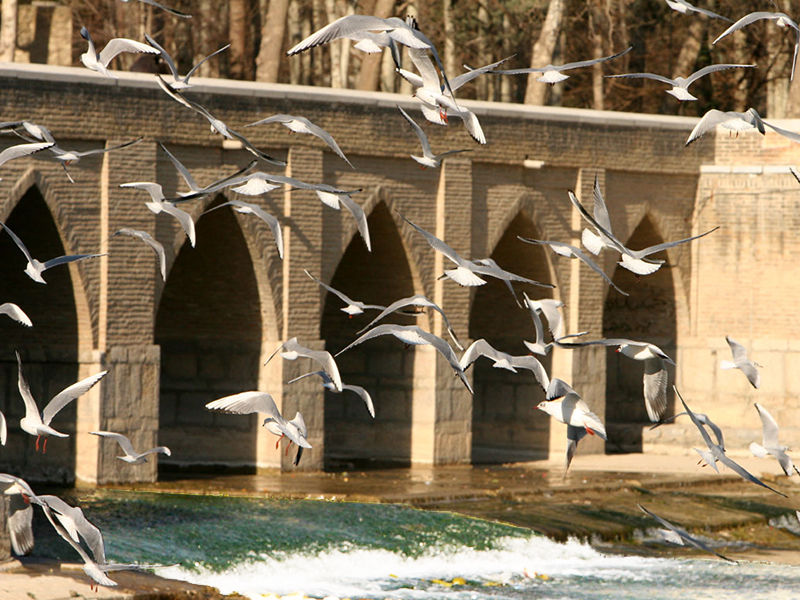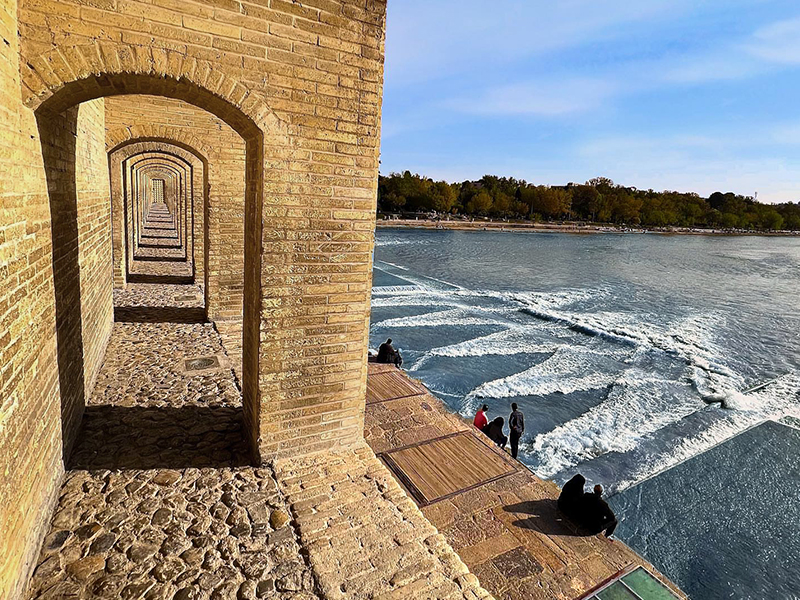Zayandeh Rud River: History, Photos, Location, Culture
Renowned for its long-lasting and ancient cultural legacy, Iran has a rich historical tapestry that never fails to awe visitors. Iran’s rivers, such as the Zayanderud, known for its visual splendor, and the Karun, the country’s longest river, are the country’s lifelines and provide a look into its natural treasures. Iran’s ancient attractions invite visitors to take an enthralling trip through time, from the elegant architecture of Isfahan’s Naqsh-e Jahan Square to the spectacular remains of Persepolis. In this article, we will look at one of the most-loved rivers of Iran, the Zayandeh Rud River.
Zayande Rud River
Once a colorful and flowing river, Zayandeh Rud in Iran serves as a sad reminder of the delicate balance between human interference and nature. The Zayandeh Rood River in Isfahan, central Iran, has seen periods of abundance and dryness, illustrating the difficulties in managing water supplies in desert environments. The river has experienced severe water scarcity in recent years, which has caused it to occasionally dry out, negatively affecting the ecosystems and communities that depend on it. Still, Zayandeh Rud has a distinct beauty that captures the mind, even in its weakened state.
The previously vibrant riverbed is now a scene of exposed rocks and stones that sparkle in the sunlight. The river gives vitality to the surroundings and provides a break from the arid plains during the infrequent times when water runs. In addition to serving as a sobering reminder of the value of conservation and appropriate water management, Zayandeh Rud’s overall beauty is a monument to the natural world’s flexibility and tenacity in the face of hardship.
Zayandeh Rood River in Isfahan
Isfahan’s Zayandeh Rud River is a powerful symbol of the city’s historical, cultural, and natural significance. It nourishes the surrounding landscapes and sustains communities, while iconic landmarks like Khaju Bridge and Si o se Pol symbolize architectural grandeur and artistic heritage.
What Is the Meaning of Zayandeh?
The Persian terms “Zayandeh” and “Rud” are combined to form the name “Zayandeh Rud”. “Rud” means “river,” and “Zayandeh” means “alive” or “flowing.” The meaning of “Zayandeh Rud” is hence the “alive river” or the “flowing river.” This river’s name honors its past condition, when it flowed regularly and copiously, supporting the local communities and ecosystems. But contrary to the meaning of its name, the river has had dry spells in recent years as a result of several circumstances, including human activity and water scarcity. Still, “Zayandeh Rud” is a tribute to the river’s past life and a reminder of how crucial it is to protect and restore its flow in the future.
Zayandeh Rud History
For thousands of years, the Zayandeh Rud River has been essential to Iran’s agriculture, trade, and settlement expansion. As early as the third millennium BCE, the Elamites used the river’s waters to build villages. Canals and water management systems were used by the Achaemenid Empire, which ruled from the sixth to the fourth century BCE, to control the river’s flow. The Islamic Golden Age was a crucial era connected to the Zayandeh Rood River, especially during the Seljuk and Safavid empires. The Safavid Empire’s capital, Isfahan, grew along the banks of the river and attracted spectacular bridges, gardens, and palaces. The city’s growth was fueled by the river’s plentiful water supply, which helped to establish its status as a marvel of both culture and architecture.
Zayandeh Rud in Iran (Location)
Isfahan, often referred to as “Half of the World” due to its architectural wonders, is home to numerous tourist attractions near Zayandeh Rud. Zayandeh Rud is a prominent river that flows through the city of Isfahan in Iran (location on map). It serves as a geographical and cultural centerpiece, enhancing the charm of this historic city. The river runs from the Zagros Mountains in the west, passing through Isfahan and eventually reaching the Gavkhuni marshes to the east. The Khaju Bridge, which crosses the Zayandeh Rud, is a well-known landmark in Isfahan. Along with being a functional bridge, Zayandeh Rud serves as a leisure area where visitors and residents congregate to take in the scenery.
The longest bridge in Isfahan is Si-o-se Pol, another stunning bridge over Zayandeh Rud. It provides expansive river vistas and is especially charming after dusk. Located near the river, Naqsh-e Jahan Square is a UNESCO World Heritage site and one of the largest public squares in the world. It is surrounded by architectural marvels such as Shah Mosque, Sheikh Lotfollah Mosque, Ali Qapu Palace, and the Qeysarieh Bazaar.
Zayande River Culture
Zayandeh Rud Rive holds a deep cultural significance in the region of Isfahan, Iran. The river’s cultural heritage is intertwined with the history, traditions, and daily life of the local people of Isfahan and is a part of Iran’s historical culture. Zayande Rud has served as a muse for artists, poets, and writers throughout history. The river’s beauty, flow, and changing seasons have been depicted in paintings, poetry, and literature. In other words, the Zayande Rud River has become a symbol for the region of Isfahan.
Another Zayande River culture is the annual event, which is called “Water Day. Zayande Rud has been a focal point for various cultural festivals and celebrations, including the annual “Water Day” celebration, where locals gather to honor the river and advocate for its preservation. During this festival, traditional music, dance performances, and cultural activities take place along the riverbanks.
Zayandeh Rud Dry
Many factors are causing the Iranian river Zayandeh Rud to become dry. Its water supplies have been overused due to agricultural practices and population growth, which has decreased the flow. The dryness has also been made worse by climate change, which has led to persistent droughts and erratic rains. The normal flow of water is disrupted by dam construction and water diversion projects, which further reduces availability downstream. The river gets drier due to unsustainable mining of subsurface water supplies from aquifers. To solve these issues, conservation initiatives and sustainable water management techniques are essential.
When to Visit Zayandeh Rud in Iran?
If you want to visit Zayandeh Rud in Iran, you will have to consider some points about it first. For example, one of the most important things to consider is when to visit Zayandeh Rud River. Many travelers and tourists recommend spring for visiting Zayandeh Rood River. The weather is mild and pleasant, and the surrounding landscapes are lush and blooming with vibrant flowers. This is a great time for sightseeing, enjoying the scenic beauty along the river, and exploring the historical sites in cities like Isfahan. Autumn is another favorable season to visit Zayandeh Rud. The weather starts to cool down, and the surrounding landscapes transition into beautiful autumn colors.
Final Words
To sum up, the Zayandeh Rud River in Iran is evidence of the allure of this enthralling country. This river creates a tapestry of natural beauty and cultural value as it winds through the center of Isfahan. Even though Zayande Rud in Iran has lost most of its beauty and its crystal-clear water in recent years, it is still one of the most iconic images of Isfahan and Iran, which has greatly influenced the Isfahani people’s culture. We ought to protect and prioritize our natural resources more.
Discover the best things to do in Isfahan and make the most of your trip by checking out our incredible Iran tours. We promise you’ll have an unforgettable memory of your travel to Iran!









Leave a Reply
Want to join the discussion?Feel free to contribute!